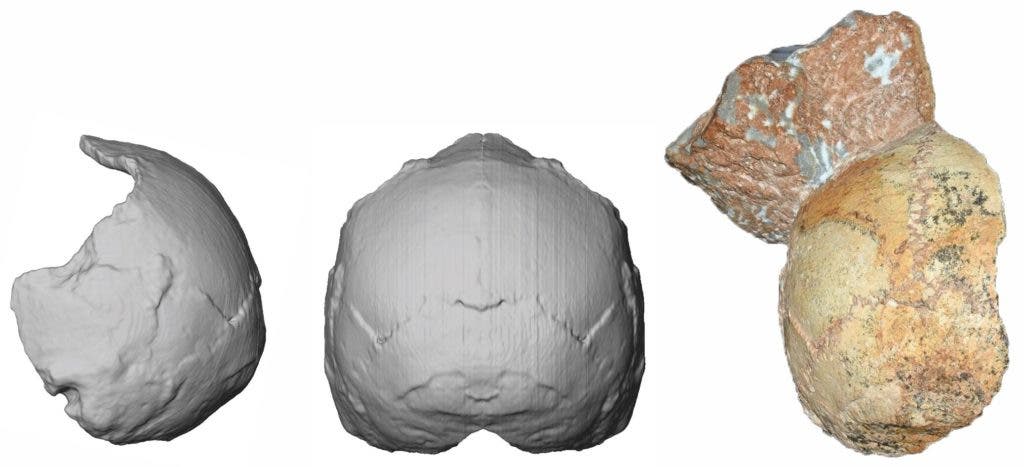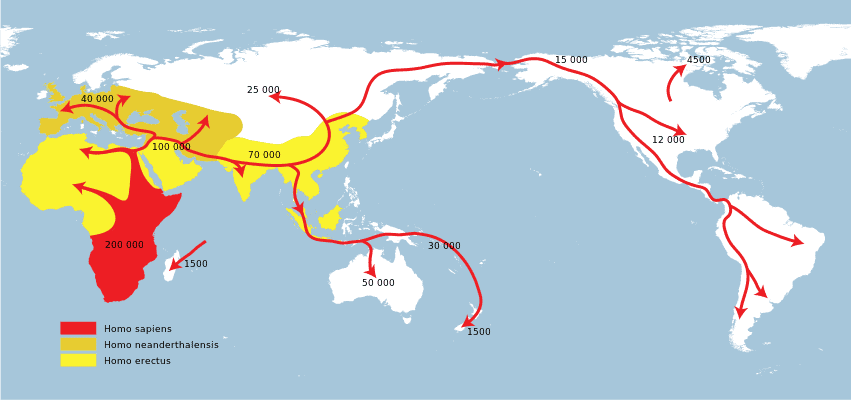A human skull dating from 210,000 years ago has been shown to be human. The skull was discovered in a Greek cave in the 1970s but was then classified as Neanderthal. A new analysis showed that it is indeed human — and its timeline is absolutely puzzling.

The Apidima 2 cranium (right) and its reconstruction (left). Apidima 2 does belong to a Neanderthal. Image credits: Katerina Harvati, Eberhard Karls University of Tübingen.
It’s easy to understand why the Apidima Cave in Greece was seen as a refuge for ancient humans. Located in southern Greece, it probably offered provided a more stable and warmer climate than most other places, with plenty of water and feeding opportunities around it. Undoubtedly, numerous humans took shelter in the area, though most of them passed without leaving behind a single (archaeological) trail. Two individuals, however, did.
Two fossilized human crania (Apidima 1 and Apidima 2) from Apidima Cave, were discovered in the late 1970s. However, the study of these fossils proved to be extremely challenging. Not only were the skulls broken and fragmented, but up until the 1990s, it was impossible to extract them from the surrounding rock matrix. Even after they were extracted, their analysis remained difficult.
Initially, scientists thought them to be Neanderthal.
Now, an international team of researchers used state-of-the-art computer modeling and uranium dating to re-examine the two skulls. They found that one of them, dating from 170,000 years ago is indeed Neanderthal. But the other one yielded a massive surprise: not only was it 40,000 years older than the other one, but it belonged to a Homo sapiens — not a Neanderthal.
This would make it the oldest out-of-Africa human skull ever discovered.

The Apidima 1 partial cranium (right) and its reconstruction from posterior view (middle) and side view (left). Image credits: Katerina Harvati, Eberhard Karls University of Tübingen.
This is more than just a quirk of history — it puts a new, unexpected constraint on the “Out of Africa” theory, the dominant model of early migration of anatomically modern humans (Homo sapiens).
“It shows that the early dispersal of Homo sapiens out of Africa not only occurred earlier, before 200,000 years ago, but also reached further geographically, all the way to Europe,” Katerina Harvati, a palaeoanthropologist at the Eberhard Karls University of Tuebingen, Germany, told AFP.
“This is something that we did not suspect before, and which has implications for the population movements of these ancient groups,” she added.
It’s generally believed that hominins, a subset of great apes that includes Homo sapiens and Neanderthals, emerged in Africa more than six million years ago. They gradually migrated away from the continent — not at once, but in several migration episodes starting two million years ago. Some 45,000 years ago, Homo sapiens emerged from out of Africa, establishing its dominance and gradually replacing Neanderthals (with episodes of mixing and interbreeding).
This old skull suggests that an earlier migration also happened way before this timeline, and the overall migration might have happened in multiple waves rather than one big gradual one.
“Rather than a single exit of hominins from Africa to populate Eurasia, there must have been several dispersals, some of which did not result in permanent occupations,” said Eric Delson, a professor of anthropology at City University of New York, who was not involved in the Nature study.
This is still a preliminary study, however — a snapshot in time. This may be an isolated individual or part of an isolated community of adventurers. It’s not clear whether they left anything behind, or interbred with Neanderthals or other hominins. It’s an enigmatic find, but it’s one for which we lack the context to properly understand. Without more evidence, it’s hard to say where this population came from, how far it ranged, and for how long it survived.
The study has been published in Nature.










